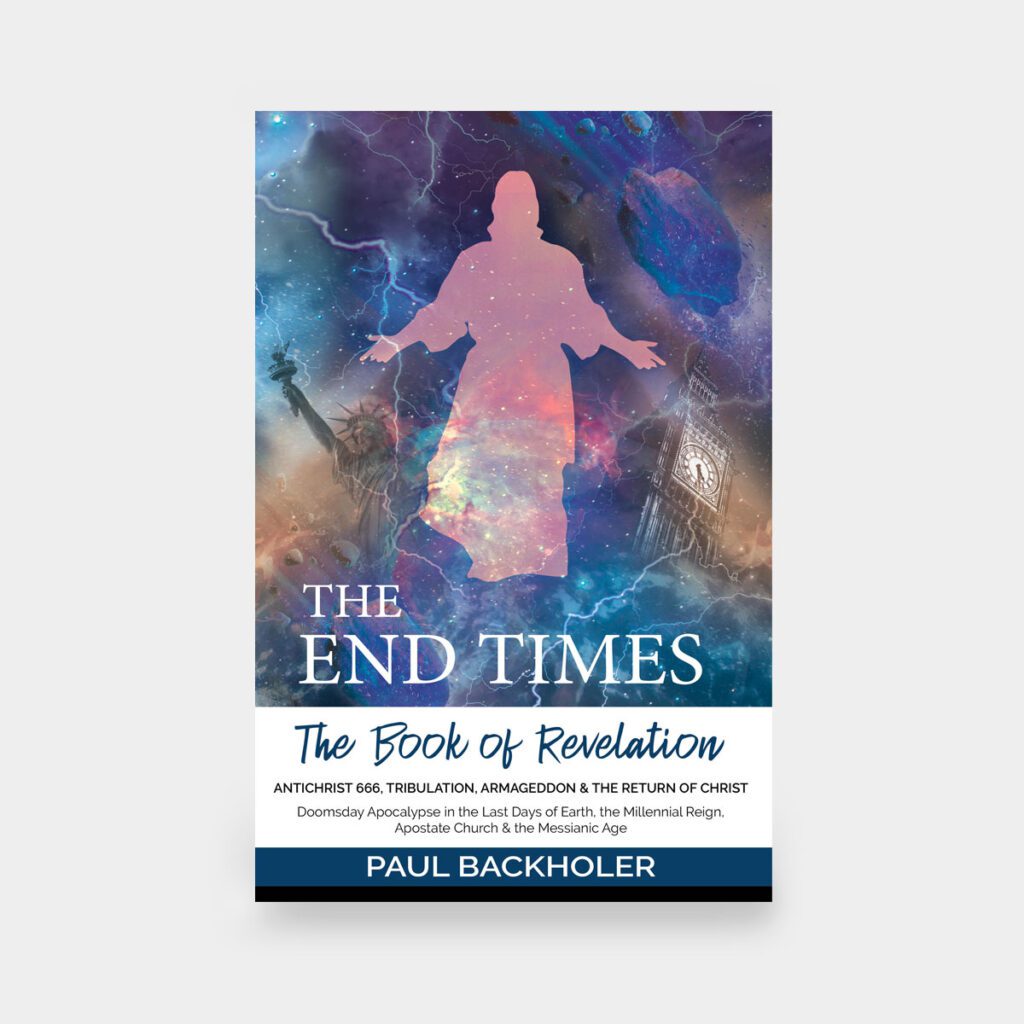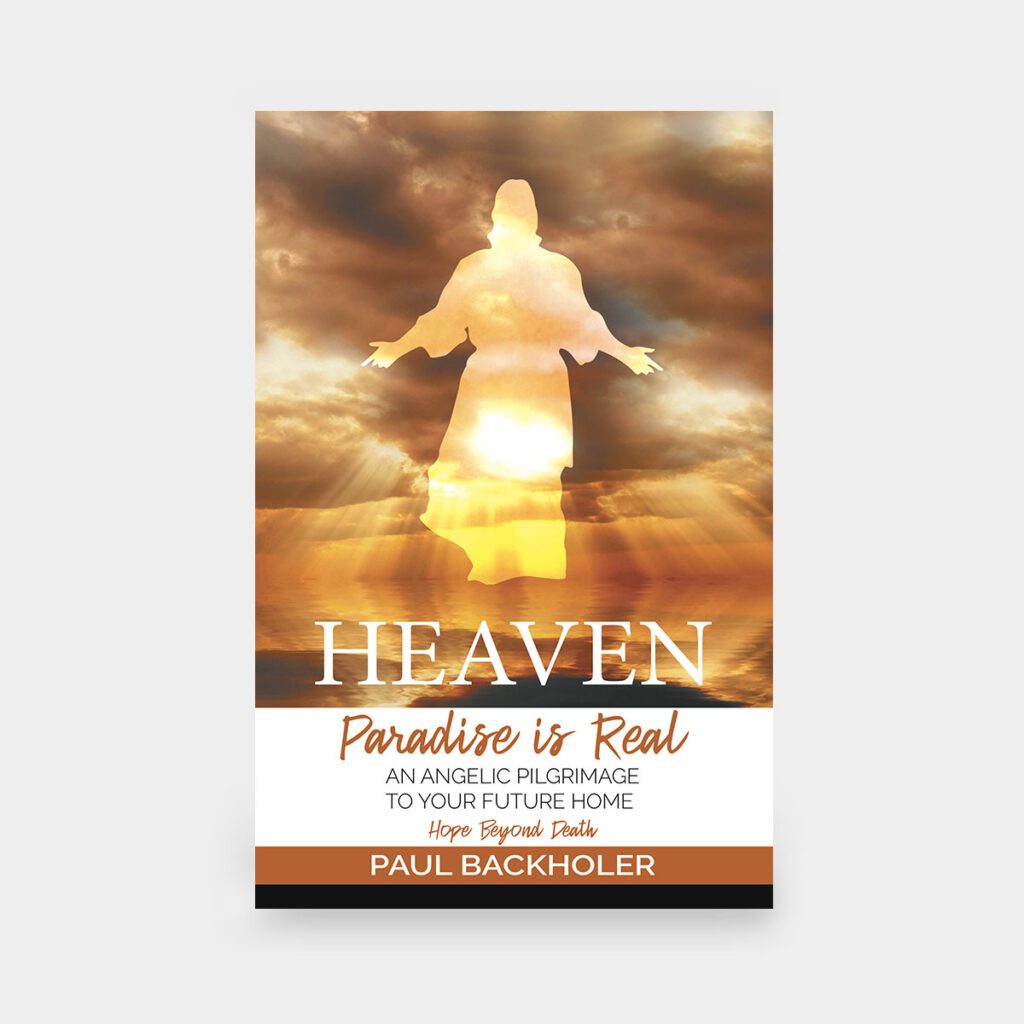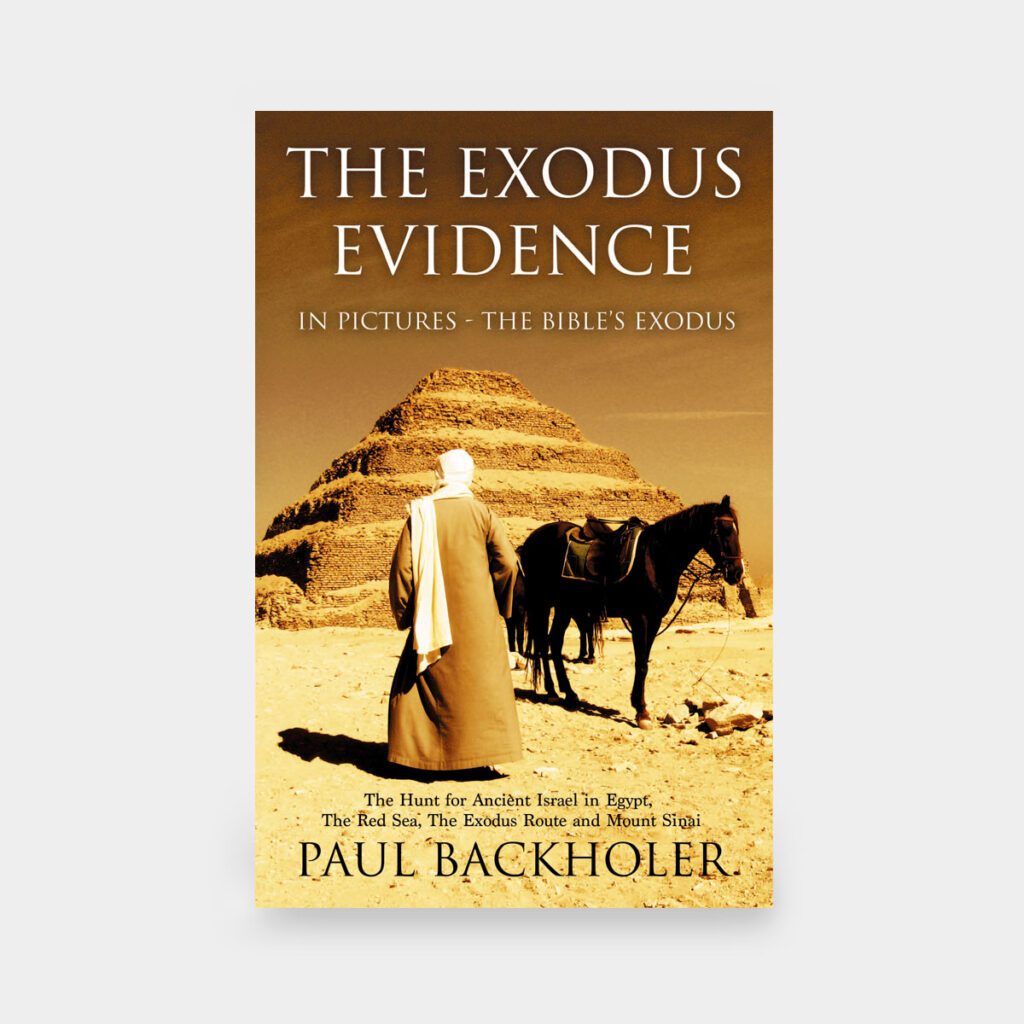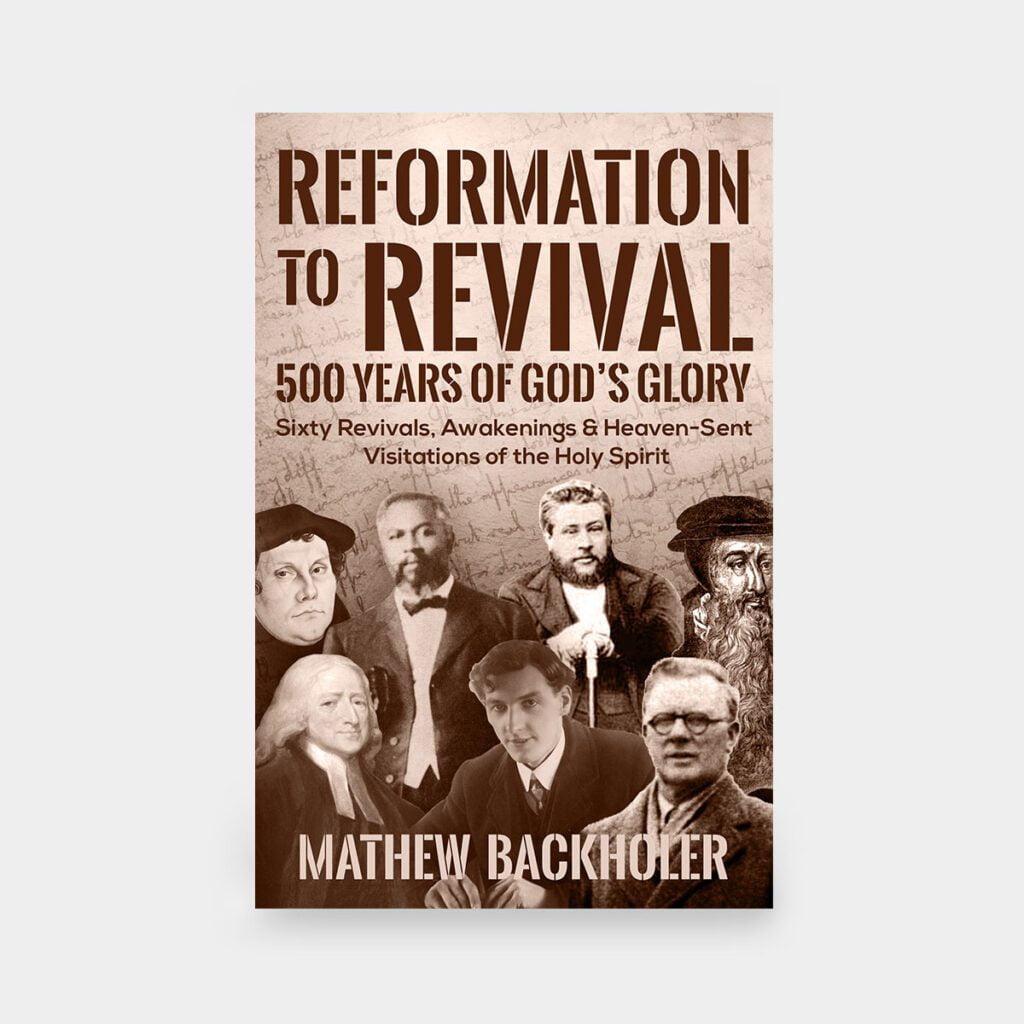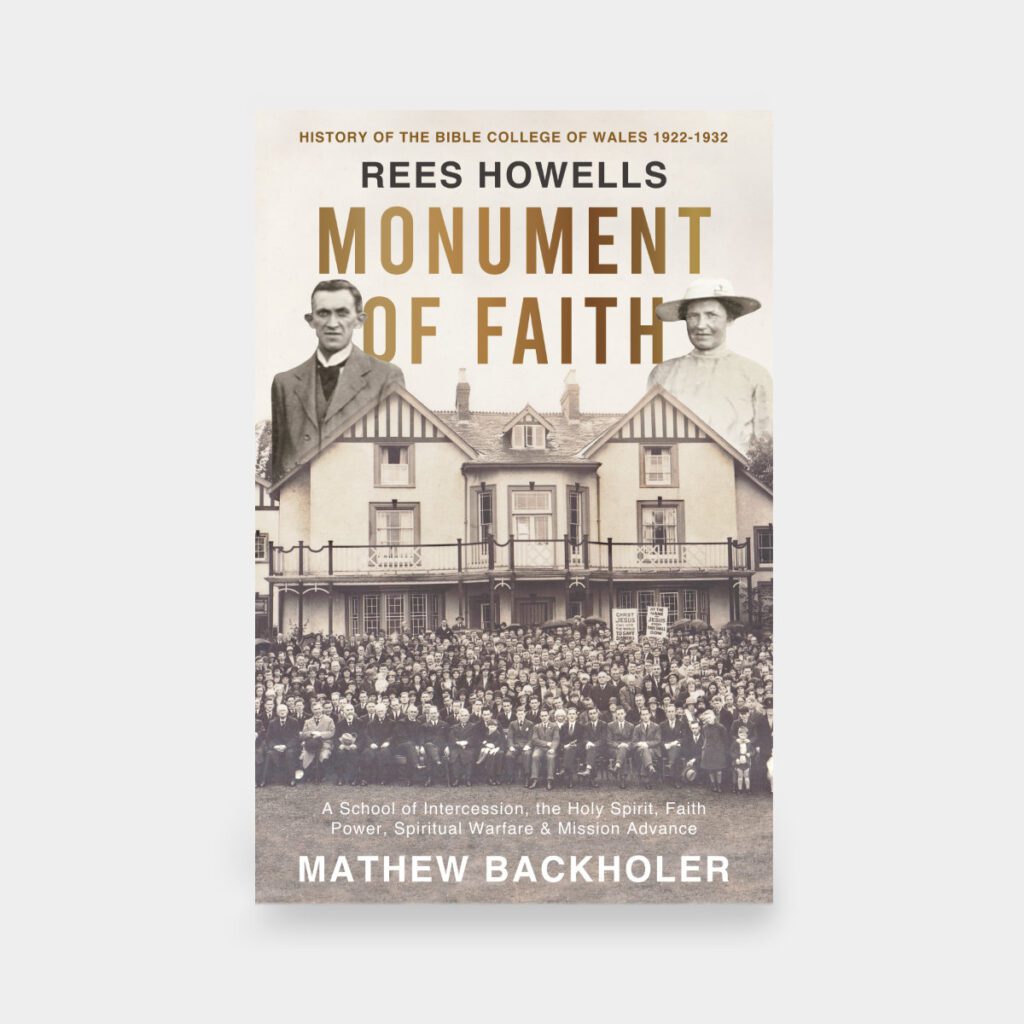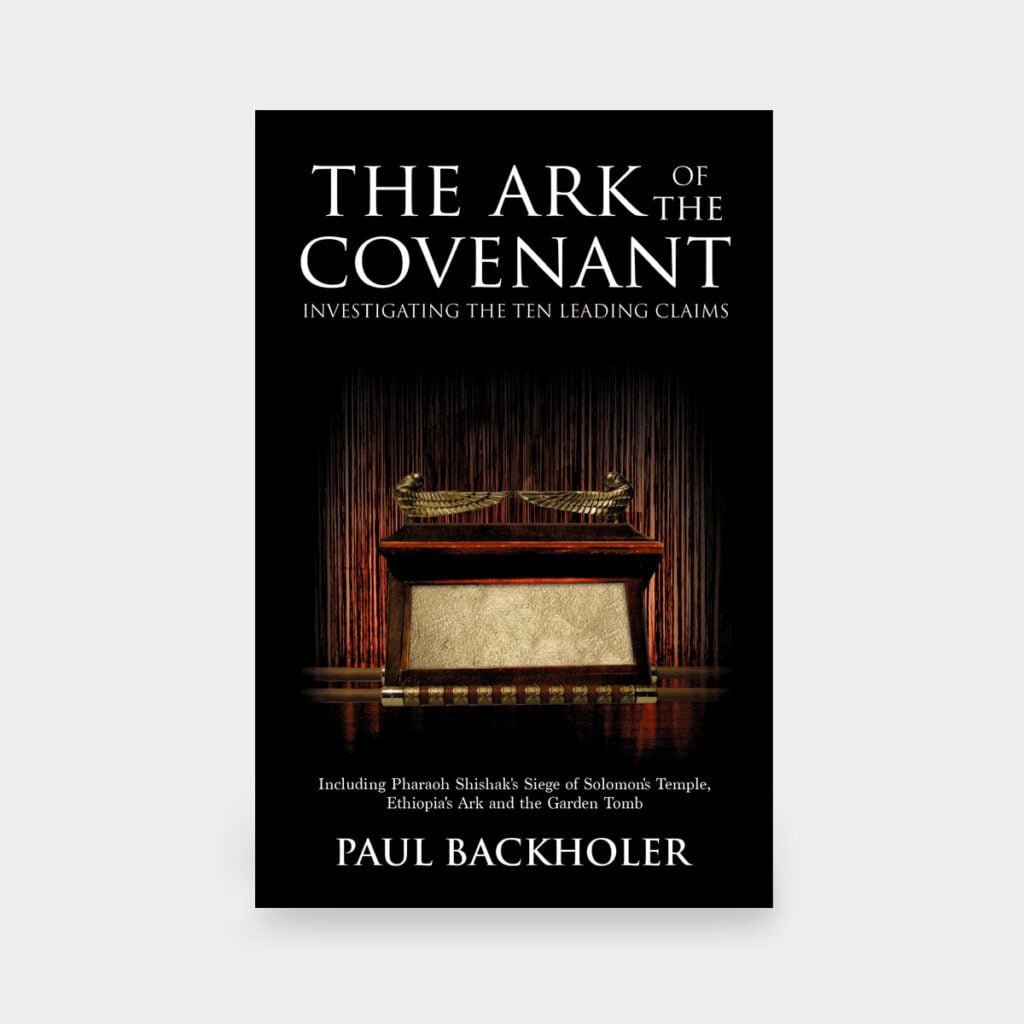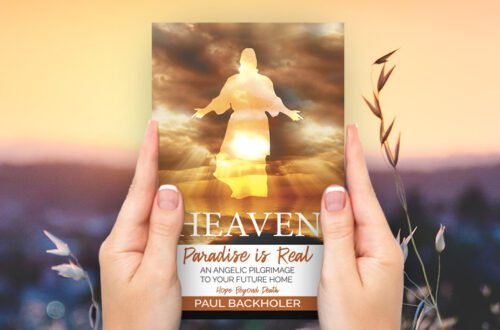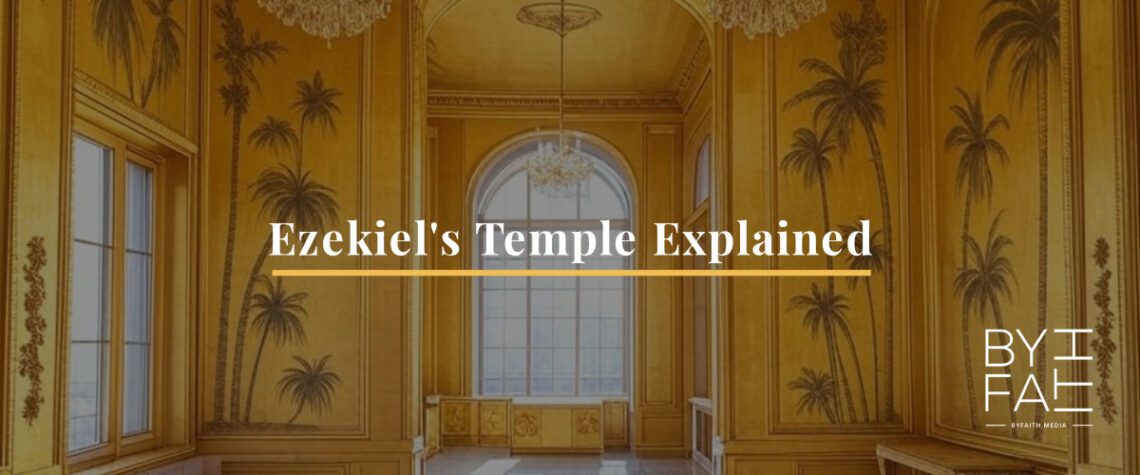
Ezekiel’s Temple in 3D Explained
Why hasn’t Ezekiel’s Temple ever been built? God revealed the plans for this great Temple thousands of years ago, but no one has ever tried to build it. Imagine a Temple compound in Jerusalem so massive, it could hold an entire city. This is the story of Ezekiel’s Temple.
“Son of man, look carefully and listen closely and pay attention to everything I am going to show you, for that is why you have been brought here. Tell the people of Israel everything you see”
– Ezekiel 40:4
Walk the Bible, Episode 10
Ezekiel’s Temple Explained Documentary, EP 10
Ezekiel’s Temple Vision
It’s the sixth century before Christ and the nation of Judah is shattered, its people are exiled in Babylon, and amidst this despair, the Prophet Ezekiel receives a breathtaking vision: a Temple of unimaginable scale and grandeur. Unlike anything ever seen before in Israel. Models and blueprints have been made to try to comprehend Ezekiel’s Temple, but what is it for? A divine city? An end time masterpiece? The seat of Messiah or something even more mysterious?
Son of man, describe the Temple to the people of Israel… make known to them the design… write these down before them so that they may be faithful to its design
-Ezekiel 43:10-11
This vision wasn’t a mere renovation of Solomon’s Temple. This was something entirely new. A complex so vast, that it dwarfed even the city of Jerusalem itself. Imagine massive walls stretching across Jerusalem, tremendous gates oriented to the cardinal directions, and courtyards designed for vast gatherings. In the vision, this new Temple is immense and overpowering, with multiple courts, gates and chambers. The layout is painstakingly comprehensive, with a focus on order and symmetry.
The Holy River
In Ezekiel’s vision, he sees a river flowing from the Temple itself. The river flows east, becoming deeper as it goes, and eventually empties into the Dead Sea, making its saltwater fresh and suitable for fishing, bringing life and hope. And water will also flow to the Mediterranean from the Temple, bringing an abundance of water to Israel. Some think of this river as spiritual, God’s presence flowing, others see it as the promise of abundance of fertility and life-giving water flowing through Israel.
The three major gatehouses into the complex are very large, nearly 100 feet tall, 42 feet wide and just below 83 feet long. This Temple is very different from Solomon’s and Herod’s, and traditional Jewish sources say that Ezekiel’s Temple was never built because the conditions for building it, a complete and lasting redemption, were never met in Jewish thinking.
Christians and Ezekiel’s Temple
Many Jewish believers think that Ezekiel’s Temple is a prophecy for the future, to be built in the Messianic era, others say it’s symbolic and spiritual. When Herod’s Temple fell in AD 70, Christians began to think of the Temple not as a physical structure, but as a spiritual symbol. Jesus Himself spoke of His body as the Temple. The Apostle Paul echoed this, describing believers as living stones in a spiritual house.
Therefore, the focus for the next 2,000 years shifted from a physical structure to a living, breathing community, of Christ’s Church, but biblical prophecy also hints at an Antichrist figure occupying a Third Temple, creating in the words of Jesus, “an Abomination of Desolation. “
Don’t let anyone deceive you in any way, for that day will not come until the rebellion occurs and the man of lawlessness is revealed, the man doomed to destruction He will oppose and will exalt himself over everything that is called God or is worshiped, so that he sets himself up in God’s Temple, proclaiming himself to be God
– 2 Thessalonians 2:3-4
As religious Jews try to rebuild the Third Temple in Jerusalem, drawing upon Herod’s plans, Christians are turning to Jesus’ words in the Book of Revelation, where Christ tells John not to measure the outer court of the Temple, because it was given to the Gentiles to be trampled, which fulfils another ancient prophecy by Daniel in chapters 7 and 12.
But exclude the outer court; do not measure it, because it has been given to the Gentiles. They will trample on the holy city for 42 months
– Revelation 11:2
When the prophecies are fulfilled concerning the rising of a Third Temple and its destruction, as Jesus returns to defeat the Antichrist, a new administration centre will be needed to govern the world during Christ’s reign on earth. Therefore, Ezekiel’s Temple is a blueprint for the future, a vision of a time when God will dwell with humanity in perfect peace.
Six times in the Book of Revelation, a thousand-year reign is mentioned:
They came to life and reigned with Christ a thousand years
– Revelation 20:4
In the Psalms, God says, “You are My Son… ask Me and I will make the nations your inheritance, the ends of the earth your possession” (Psalm 2:7-8). And Jesus said to His disciples, “You who have followed Me will also sit on twelve thrones, judging the twelve tribes of Israel” (Matthew 19:28). During this period, called the Millennial Reign, many great and unfulfilled biblical prophecies about the reign of the Messiah on earth will come to pass.
Then the survivors from all the nations that have attacked Jerusalem will go up year after year to worship the King, the Lord Almighty… and the Lord will be king over the whole earth
– Zechariah 14:9, 16
Christ Dwells With Us
Ezekiel’s Temple is a powerful symbol of the ultimate restoration, a time when God, in Christ, will dwell fully with humanity. Imagine Christ in the Temple, receiving the leaders of the world coming to pay Him homage. Imagine millions worshipping the Lord in Jerusalem at the Temple Ezekiel saw in his message from God.
He will judge between the nations and will settle disputes for many peoples. They will beat their swords into plowshares and their spears into pruning hooks. Nation will not take up sword against nation, nor will they train for war anymore
– Isaiah 2:4
Ezekiel saw the glory of the Lord coming from the east and filling the Temple, and underscoring the importance of its building. To the east of the Temple Mount today is the Golden Gate, which is shut until the Messiah, Jesus Christ, returns to open it.
Then He brought me back to the outer gate of the sanctuary which faces toward the east, but it was shut. And the Lord said to me, “This gate shall be shut; it shall not be opened, and no man shall enter by it, because the Lord God of Israel has entered by it; therefore it shall be shut”
– Ezekiel 44:1-2
Christ’s Government
In the Lord’s thousand-year reign, Ezekiel’s Temple will fulfil a role similar to The White House and Buckingham Palace, Westminster Abbey and St Paul’s Church, all combined. A religious and political centre for the world, as the kings, presidents and prime ministers stand before Christ to receive judgement and guidance. It will be the seat of Christ’s government, where the ambassadors from the nations submit to Christ’s rule of peace, as Isaiah’s prophecy of the lion and lamb dwelling together in peace will finally be fulfilled.
For to us a child is born, to us a Son is given, and the government will be on His shoulders. And He will be called Wonderful Counsellor, Mighty God, Everlasting Father, Prince of Peace
– Isaiah 9:6
The Surrounding Area
Ezekiel 42:15-20 describes the measuring of the entire area surrounding the Temple. It states that the man with the measuring rod measured the outer area on all four sides. The measurement given is 500 reeds on each side. A reed is generally considered to be 6 cubits. A cubit is approximately 1.5 to 1.75 feet (depending on which cubit is used). For this calculation, we’ll use 1.7 feet, which is often used for Ezekiel’s temple. Therefore 1 reed = 6 cubits, 1.7 feet/cubit = 10.2 feet and 500 reeds = 500, 10.2 feet = 5100 feet. Thus, the area surrounding Ezekiel’s Temple that must be kept holy is 5100 feet long and wide. That’s like eighteen city blocks all next to each other with the space for 13,000 houses.
This is the law of the Temple: The whole area surrounding the mountaintop is most holy. Behold, this is the law of the Temple
– Ezekiel 43:12
So, when we see the large space around the Temple, this could be used for a vast worship centre or for administrative buildings for all the nations of the world, as Christ sends out His ambassadors to fulfil the work of running the world for God’s glory.
Judgment of the Nations
After the defeat of the Antichrist, King Jesus will judge the nations for their sins against Israel and Joel’s prophecy will be fulfilled:
I will also gather all nations, and bring them down to the Valley of Jehoshaphat; and I will enter into judgment with them there
-Joel 3:2
Partitioning Jerusalem and Israel
The prophecy tells us what the focus of the judgment of Messiah will be: ‘On account of My people, My heritage Israel, whom they have scattered among the nations; they have also divided up My land’ (Joel 3:2). In international law we call this, partition.
Jesus said, “When the Son of Man comes in His glory, and all the holy angels with Him, then He will sit on the throne of His glory. All the nations will be gathered before Him, and He will separate them one from another, as a shepherd divides his sheep from the goats”
– Matthew 25:31-32
All Nations Come to Jerusalem to Worship
Ezekiel provides ample details about the Temple’s construction and dimensions, and gives us a vision for the future of Jerusalem during the seat of Messiah. The Prophet Isaiah foresaw the end times saying:
Now it shall come to pass in the latter days that the mountain of the Lord’s house shall be established on the top of the mountains… and all nations shall flow to it. Many people shall come and say, “Come, and let us go up to the mountain of the Lord, to the house of the God of Jacob. He will teach us His ways and we shall walk in His paths.” For out of Zion shall go forth the law and the Word of the Lord from Jerusalem
– Isaiah 2:2-3
A Religious and Administrative Centre
Ezekiel’s Temple will therefore be a religious and administrative centre, but there will never be a need for a blood sacrifice in the Fourth Temple of Jerusalem, because the Lamb of God, Jesus Christ, has already made atonement for all sin.
We have been made holy through the sacrifice of the body of Jesus Christ once for all
– Hebrews 10:10
But the work of the Levites will continue under the terms of the New Covenant, perhaps with festivals and other forms of ministry, as Israel is grafted back into the vine, and Jew and Gentile become one in Christ. The sacrifices offered in the Millennial Temple of Jerusalem will represent the sacrifice of praise from the nations, who will enter the Temple to worship King Jesus of Israel and of all the earth.
You do not support the root, but the root supports you. You will say then, “Branches were broken off so that I could be grafted in… they will be grafted in, for God is able to graft them in again”
– Romans 11:18-24
Unfilled Messianic Prophecies
Israel will be restored as they recognise Jesus Christ as their King, Saviour and Lord. Zechariah foresaw the rejection of Messiah, and Israel’s repentance and restoration.
And I will pour out on the house of David and the inhabitants of Jerusalem a spirit of grace and supplication. They will look on Me, the One they have pierced, and they will mourn for Him as one mourns for an only child, and grieve bitterly for Him as one grieves for a firstborn son
– Zechariah 12:10
The Messianic Age will be a time of peace, prosperity and spiritual renewal ushered in by the Messiah, Jesus Christ. The whole world will worship the God of Israel (Isaiah 2:11-17, Isaiah 40:5, Zephaniah 3:9) and will serve the Lord in person (Jeremiah 31:33).
All Jews will return to their homeland and the descendants of the lost tribes living in the Middle East will also receive a revelation of their true identity (Isaiah 11:12, 27:12-13, Revelation 7:3-8). The Jewish people will then experience peace with eternal joy with gladness (Isaiah 51:11).
Then I heard the number of those who were sealed: 144,000 from all the tribes of Israel
– Revelation 7:4
Nations will recognise the wrongs they did to Israel and will be judged for their sin (Isaiah 52:13-53:5, Joel 3:2, Matthew 25:31-32). The peoples of the world will turn to Israel, the seat of Messiah for spiritual guidance (Zechariah 8:23). There will be a time of universal peace, as the weapons of war are destroyed (Isaiah 2:4, Isaiah 11:6, Micah 4:3, Ezekiel 39:9). This will happen after Jesus is recognised by Israel and the Jews as the heir of King David, biologically and spiritually (Numbers 1:18, Jeremiah 33:17).
- The Book of Revelation Chronology: An End Time Timeline by Paul Backholer
- A Third Temple in Jerusalem will be Built
- The Battle of Armageddon and the Return of Jesus Christ to Israel
- 666 – The Mark of the Beast and the End Times Antichrist
- What is the Rapture?
- Six End Time Signs for Israel
- 20 Signs of the End Times
- Christians will be Raptured before the Tribulation
- The Seven Trumpets in the Book of Revelation
- Borders are Good! The Bible, Immigration, Refugees & Economic Migrants
- Is Being Woke Christian or Antichrist?
- The Collapse of the United States: A Time-Traveller from 1950 Visits the US in 2023
- Homosexuality, Promiscuity and the Collapse of Society: Follow the Science
- The Forgotten White Slaves and the Ignored History of Slavery Worldwide
- What is a Woman? And why it Matters to Christians
- Why Abortion is Wrong
Therefore, Ezekiel’s Temple is a beacon of hope for a future yet to come. It is a vision of the past, a symbol of the present, and a promise for the future. A reminder that the desire for connection with the Divine is etched into the very fabric of our being.
Church Fathers and the Millennial Reign of Christ
Some theologians declare the belief in a thousand-year reign of Christ on earth is a modern idea, but this is not true. The concept of a millennial reign of Christ, often referred to as the ‘Millennium’ or ‘Chiliasm,’ was a topic of theological discussion among early Church Fathers.
Blessed and holy are those who share in the first resurrection. The second death has no power over them, but they will be priests of God and of Christ and will reign with him for a thousand years
– Revelation 20:6
Papias of Hierapolis (AD c.60–130) is one of the earliest Church Fathers known to have supported the idea of a literal, earthly millennium. He reportedly believed in a future period of peace and prosperity on earth under the direct reign of Christ, although his works survive only in fragments cited by others.
Amongst these Papias says that there will be a millennium after the resurrection from the dead, when the personal reign of Christ will be established on this earth
– Eusebius citing Papias, c.120
Justin Martyr (AD c.100–165) also seemed to hold a chiliastic view. In his Dialogue with Trypho, he mentions that many Christians of his time believed in a thousand-year reign of Christ after the resurrection, but he also acknowledges that others did not share this view, indicating early diversity in belief.
I and others, who are right-minded Christians on all points, are assured that there will be a resurrection of the dead, and a thousand years in Jerusalem, which will then be built, adorned, and enlarged, [as] the prophets Ezekiel and Isaiah and others declare
– Justin the Martyr c.160
Irenaeus of Lyons (AD c.130–202) was a prominent advocate for a literal millennium. In his work Against Heresies, he describes this period as one where Christ would bind the devil for a thousand years, and reign on earth with the just, after which would come the final judgment.
He seized the dragon, that ancient serpent, who is the devil, or Satan, and bound him for a thousand years
– Revelation 20:2
His interpretation was that the millennium would be a time of peace and fulfilment of Old Testament prophecies about the renewal of the earth.
Those years wherein Satan is bound are in the first advent of Christ, even to the end of the age; and they are called a thousand… and he shut him up, says he, and put a seal upon him, that he should not deceive the nations until the thousand years should be finished
– Victorinus c.280
Tertullian (AD c.160–220) initially supported the idea of a millennial kingdom, though his later works show a shift towards more allegorical interpretations of Scripture. His early writings, like Against Marcion, reflect a belief in a literal reign of Christ. In the following quote, Tertullian notes a thousand-year reign of Christ on earth, but to add confusion, he blends the New Jerusalem of Revelation 21 – the New Heaven and New Earth – within this period, and he explains how people’s visions are part of his understanding.
But we do confess that a kingdom is promised to us upon the earth, although before heaven, only in another state of existence; inasmuch as it will be after the resurrection for a thousand years in the divinely-built city of Jerusalem, “let down from heaven,” which the apostle also calls “our mother from above” … This prophecy, indeed, has been very lately fulfilled in an expedition to the East. For it is evident from the testimony of even heathen witnesses, that in Judea there was suspended in the sky a city early every morning for forty days. As the day advanced, the entire figure of its walls would wane gradually, and sometimes it would vanish instantly
– Tertullian, AD c.208
Tertullian is trying to understand Ezekiel’s vision within the context of the visions of the Book of Revelation, as the New Jerusalem descends from heaven. Other scholars separate Ezekiel’s Temple from the Heavenly Jerusalem, because Ezekiel’s Temple belongs to Earth 1, while the New Jerusalem is for Earth 2.
Then I saw “a new heaven and a new earth,” for the first heaven and the first earth had passed away, and there was no longer any sea. I saw the Holy City, the new Jerusalem, coming down out of heaven from God
– Revelation 21:1-2
To understand why the concept of a millennial reign diminished in some theology, we need to comprehend how Origen and Augustine of Hippo influenced Eastern and Western theology. Origen (AD c.185–254), is known for his allegorical interpretations of Scripture. He opposed the idea of a literal millennium, viewing it instead as a spiritual concept. His influence led to a decline in the popularity of chiliasm in the East. But the Bible is clear that the prophecies of the Old and New Testaments align.
I will place over them One Shepherd, My servant David, and He will tend them; He will tend them and be their Shepherd
I am the Good Shepherd…
I, Jesus… am the Root and the Offspring of David, and the bright Morning Star
– Ezekiel 34:23-24, John 10:14, Revelation 22:16
Augustine of Hippo (AD 354–430) initially held a chiliastic view but later changed his stance. In his City of God, he interprets the millennium symbolically, suggesting it represents the current church age where Christ reigns spiritually rather than physically on earth. This interpretation became very influential in Western Christian theology, largely shaping the amillennialist view. But look how the prophecy of Isaiah is fulfilled in the Gospel of John.
These varying interpretations among early Church Fathers illustrate that there was no uniform belief about the Millennium in the early Church; both chiliastic and non-chiliastic views existed. The interpretation of Revelation 20, where the millennium is explicitly mentioned, varied from literal to symbolic. But in the Gospels, we see Jesus as both King of Israel and the Light to the Gentiles.
Of the greatness of his government and peace, there will be no end. He will reign on David’s throne and over his kingdom.
Then Nathanael declared, “Rabbi, you are the Son of God; you are the King of Israel”
– Isaiah 9:7, John 1:49
Sovereign Lord, as you have promised, you may now dismiss your servant in peace. For my eyes have seen Your salvation, which you have prepared in the sight of all nations: a light for revelation to the Gentiles, and the glory of your people Israel
– Luke 2:29-32
In His final earthly words, Jesus addressed His disciples, speaking of two matters. While the restoration of Israel would indeed occur, he emphasised that the timing of this event was not theirs to know. Their immediate and primary mission, however, was to spread the Gospel to all nations.
Then they gathered around him and asked him, “Lord, are you at this time going to restore the Kingdom to Israel?” He said to them: “It is not for you to know the times or dates the Father has set by His own authority. But you will receive power when the Holy Spirit comes on you; and you will be My witnesses in Jerusalem, and in all Judea and Samaria, and to the ends of the earth”
– Acts 1:6-7
Tradition Versus Scripture
Whilst verses about the reign of King Jesus fill the Old and New Testaments, over time in the Church Age, the symbolic or spiritual interpretation gained more traction, particularly in the West, due to the influence of figures like Augustine. This diversity in early Christian thought on the millennial reign reflects the complex and evolving nature of Christian eschatology. Nevertheless, the biblical prophecies about the life of Jesus bring clarity to His role.
He will be great and will be called the Son of the Most High. The Lord God will give Him the throne of His father David, and He will reign over Jacob’s descendants forever; His kingdom will never end
You have made them to be a kingdom and priests to serve our God and they will reign on the earth
On His robe and on His thigh He has this name written: King of kings and Lord of lords.
– Luke 1:32-33, Revelation 5:10, Revelation 19:16
By Paul Backholer. Find out about Paul’s books here.
Don’t forget to Subscribe to Walk the Bible on YouTube & follow us on social media @walkthebible to keep up-to-date with the latest episodes from Walk the Bible.


